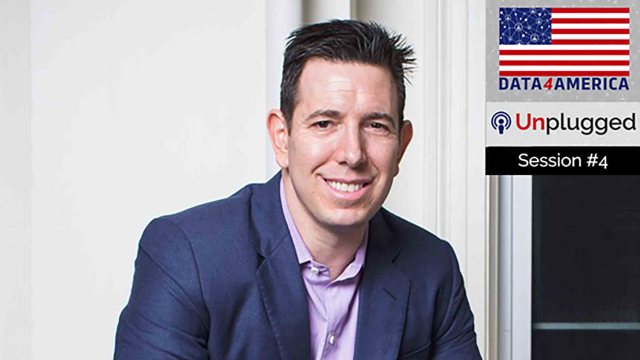Ask Ethan: Could the Universe have begun from a Big Bounce?
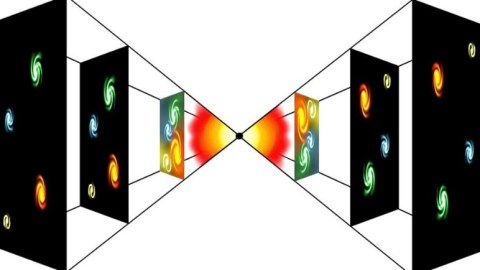
And just what did come before — way before — the Big Bang?
“We are part of the universe that has developed a remarkable ability: We can hold an image of the world in our minds. We are matter contemplating itself.” –Sean Carroll
Thanks to incredible advances in science over the past century, we’ve been able to determine where our Universe came from in the past, how it got to be the way it is today and where it’s headed into the distant future. But there are still limits to what we can say: there’s a limit to how far back we can gain any sort of information from, and there’s a limit to how far into the future we can predict the Universe’s evolution with any certainty. When you head beyond those limits, that’s where the greatest mysteries of all lie. Katherine Litchin asks us about one of them:
After reading your post on the Big Freeze fate of the universe, I was wondering what you think about the Big Bounce scenario?
There are three parts to this: what we know, what remains possible, and what we think is most likely (for good reasons).
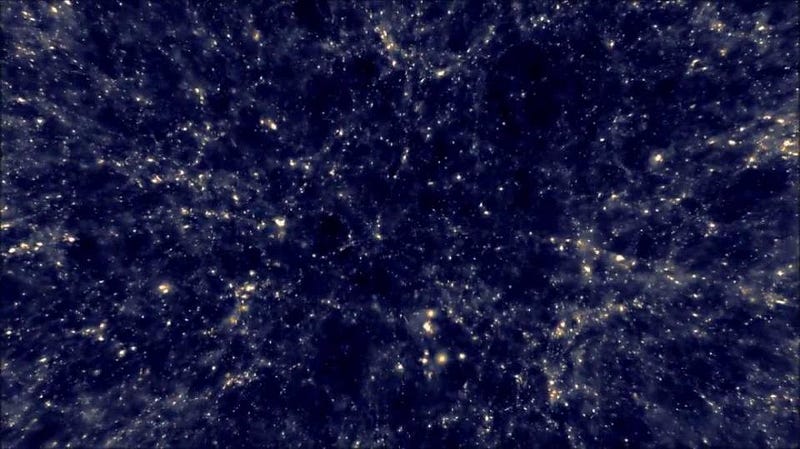
Our Universe, as it exists right now, is full of stars, galaxies, black holes, dark matter, dark energy and radiation. It has clumps and clusters; it has giant voids. It’s expanding, it’s cooling, and it contain a certain number of particles arranged in a particular way at any given moment. Based on what we know it’s made out of, how it’s expanding and what the laws of physics are known to be, we can both extrapolate the Universe into the past and into the future. When we go into the past, we find it was smoother, hotter, denser, less clumpy, more energetic and more uniform; when we go into the future, we find that it will become clumpier, frozen, sparser, less energetic and emptier. To a very high degree of accuracy, we know this to be true.

One thing we can look at, to help us understand this in a different way, is by looking at the entropy of the observable Universe. Entropy is difficult to wrap your head around conceptually, but you can think about it in the following way: it’s the number of possible ways you can arrange the states in a particular system. Today, we can calculate the entropy of the Universe and get a number: about 10¹⁰⁴ k, where k is Boltzmann’s constant. It’s mostly due to supermassive black holes at the centers of galaxies, where the entropy of just the Milky Way’s supermassive black hole is 10⁹¹ k. These black holes didn’t exist when the Universe was very young (they hadn’t formed yet), and so the entropy was much lower; in the far future, the Universe will reach an even higher entropy state when they all decay via Hawking radiation (which hasn’t happened yet). When the Universe was dominated by radiation some 13.8 billion years ago, the entropy was only 10⁸⁸ k; when the last black hole decays in the far future, the entropy will be 10¹²³ k. The laws of thermodynamics — where entropy always increases — are consistent with what’s happening in our Universe.
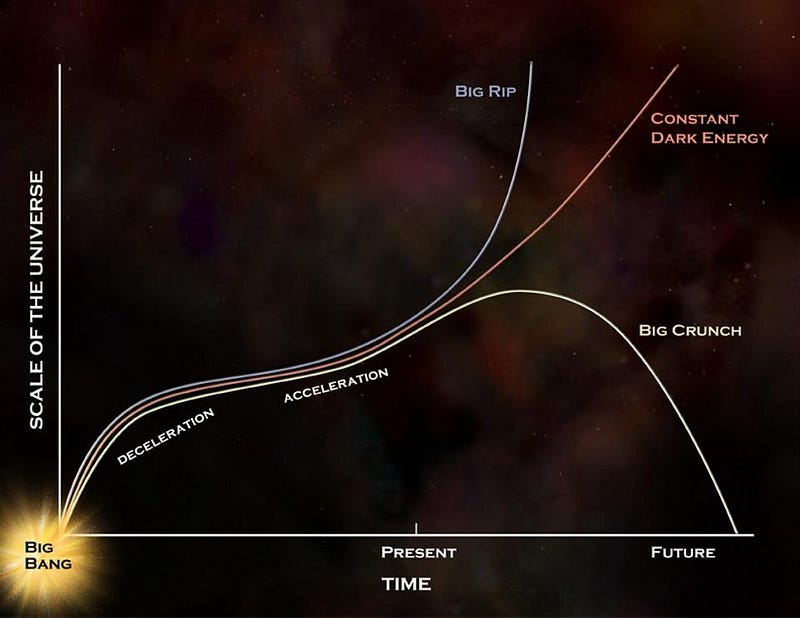
So what about what’s possible? Moving forwards, the Universe could continue to expand forever, continue to accelerate and do so forever, but could also rip apart, tunnel to a new quantum state or recollapse to a singularity. Moving backwards, it could have existed in an inflationary state before the hot Big Bang (with an even lower entropy, of no more than ~10¹⁵ k), but with nothing known before the final 10^-33 seconds or so of that. Did it have a singular beginning, where time and space themselves began? Or have they always existed? At the American Astronomical Society’s annual meeting, cosmologist Sean Carroll described four possibilities for a non-singular origin for the Universe in great detail:
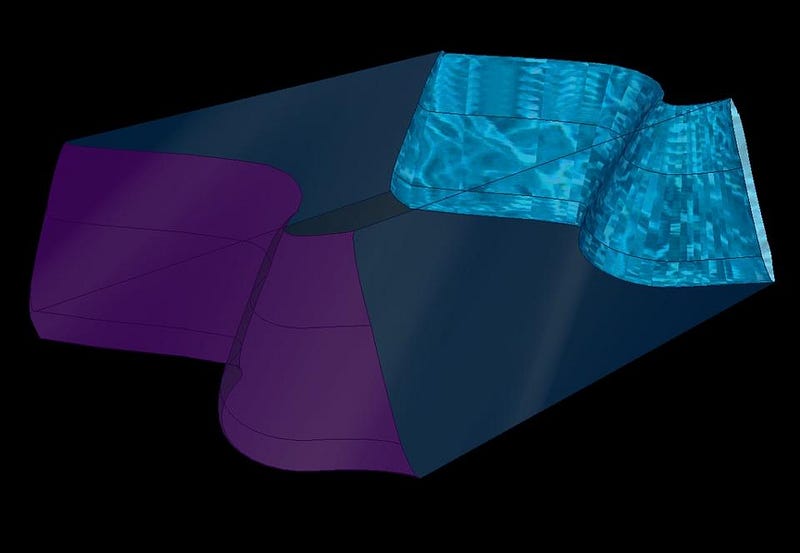
- A stringy bounce. In General Relativity, if you extrapolate back to an arbitrarily hot, dense or small state, you inevitably arrive at a singularity, and definitions of time and space break down. But in quantum extensions that go beyond GR, like loop quantum gravity, string theory or brane cosmology, you can “bounce” from a pre-existing, collapsing state to a hot, dense, expanding one.
- A cyclic cosmology. This is like a stringy bounce, except it “bounces” over and over. The Universe expands, reaches a maximum size, contracts — with entropy increasing the entire time — and then recollapses, where it bounces again.
- A hibernating cosmology. Instead of expanding rapidly, like our Universe does today or did during inflation, the Universe could have been in a state that remained relatively constant or quiescent for a very long time. This requires something exotic, like “degravitation” (where gravity gets turned off for a time), or a string gas cosmology.
- A reproducing cosmology. This last one is where a Universe gets “birthed” from a previously existing spacetime, where this pre-existing spacetime has a variety of locations and properties, but did not begin in a singularity. In this case, one of the offspring Universes grows into our own.

A “big bounce” is certainly a possibility worth considering, and many people do. But there’s a big problem with it, and with scenarios 1, 2 and 3, above: the problem that our Universe needs to be born with low entropy, and we have the second law of thermodynamics. Either the entropy of the Universe must have decreased in the past, which is the biggest violation of the second law of thermodynamics of all, or the entropy was even smaller in the past, finely tuned to be arbitrarily close to zero.
The first scenario — the stringy bounce — needs to have decreasing entropy; the cyclic bounces need to have entropy always be increasing. This means the last cycle, pre-bounce, needs to have even less entropy than the birth of our Universe did all throughout; that this cycle will have entropy increase all throughout it; and that the next bounce will begin with even greater entropy than our Universe will end with. Of all the scenarios, only the fourth one, the reproducing cosmology, avoids the entropy problem. To imagine how this works, imagine a Universe in some state where there’s a lot of entropy, a lot of variations and a lot of fluctuations.
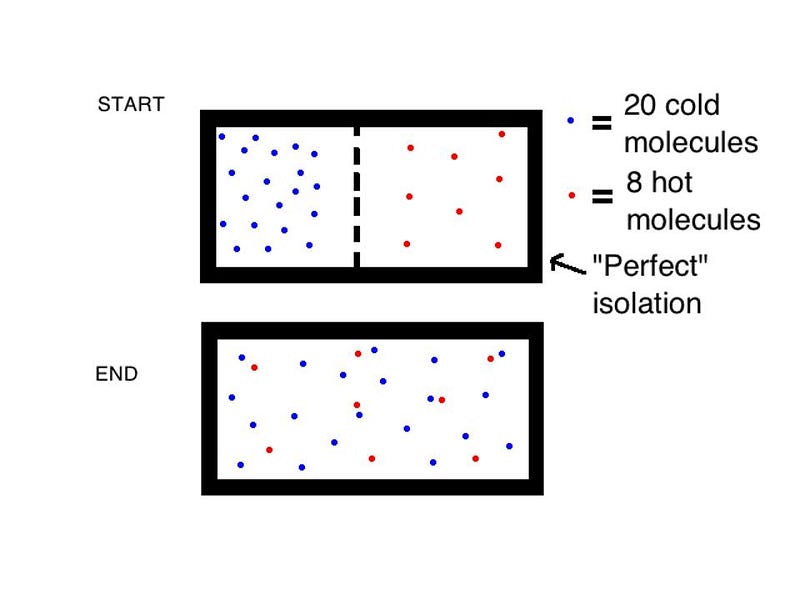
This is pretty generic; it’s the least finely-tuned initial state we could begin with, and it also has a lot in common with most physical systems that you’d design, like a room filled with gas molecules at a relatively high temperature. You’d never expect all the molecules to wind up on one half of the room at once, leaving the other half empty. That’s not only thermodynamically disfavored, it’s statistically incredibly unlikely. But you wouldn’t be surprised if one fist-sized region had a few billion more-or-fewer molecules than the average amount, or contained slightly more (or less) energy or entropy than the overall average. If you restricted yourself to looking at extremely small regions, like regions the size of a virus (which can be as small as about 5 nanometers), you might find one that had a fluctuation with extremely low, or perhaps even negligible, entropy. The overall entropy of the system must still increase, but a very small region could have a very low — even negligible — entropy at any given time.
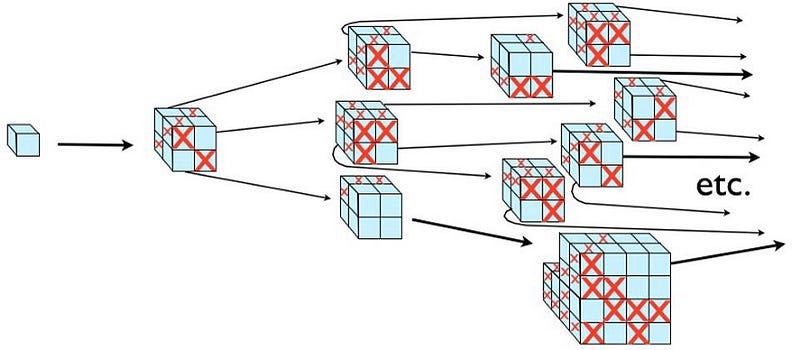
And perhaps, then, that tiny fluctuating region, where the entropy becomes low enough, could give birth to a new Universe, where inflation occurs.
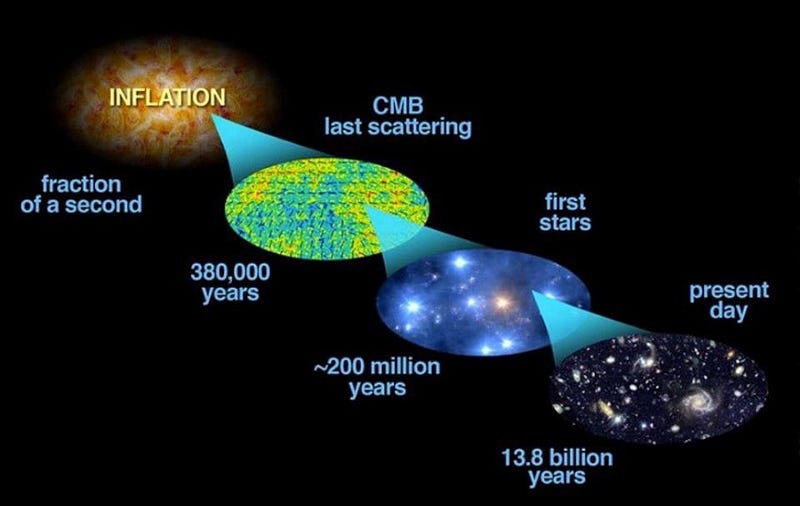
Inflation has this wonderful property that once it begins, it creates more and more space at an incredibly rapid rate that builds upon itself exponentially. There are regions where inflation will end — giving rise to a hot Big Bang and creating a matter/antimatter/radiation-filled space like our part of the observable Universe — but there are regions where it will continue into the future. The Universe may have began from a singularity, where time and space emerged from a state where there was no time and space outside of it (as much as concepts as “emerged” or “outside” make sense with no space or time), but it also may have come from an ultimately non-singular state. However, as long as we have the second law of thermodynamics, which means as long as the overall entropy of a system can never decrease, the “big bounce” ideas have a very large obstacle to overcome. In the absence of any evidence for a recollapse, coupled with the theoretical difficulties a bounce scenario faces, the best that physics has to offer favors a reproducing scenario for our Universe’s ultimate birth.
Submit your Ask Ethan questions to startswithabang at gmail dot com.
This post first appeared at Forbes, and is brought to you ad-free by our Patreon supporters. Comment on our forum, & buy our first book: Beyond The Galaxy!





